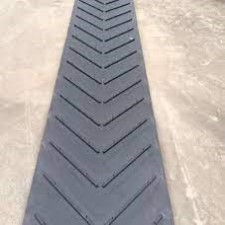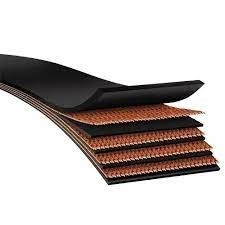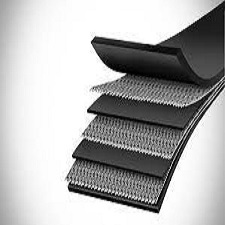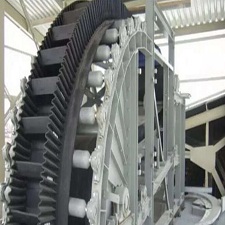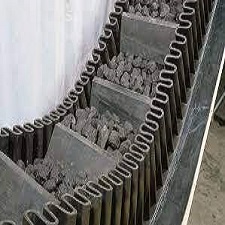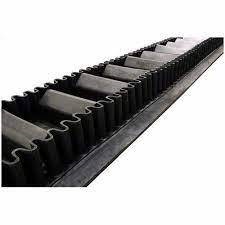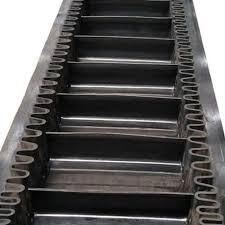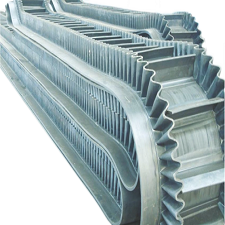Textile Conveyor Belts
- A textile conveyor belt manufactured by Mouldtech Industries is a type of conveyor belt that is made up of multiple layers of fabric material. The layers are usually made of polyester, nylon, or cotton, and are designed to provide strength, durability, and flexibility to the belt. Textile conveyor belts are commonly used in industries such as mining, agriculture, and manufacturing, where they are used to transport materials over long distances. These belts can be customized to suit the specific needs of a particular application, with options for thickness, width, and strength. They are generally lighter and more cost-effective than other types of conveyor belts, and their flexibility makes them ideal for conveying materials around corners and over uneven surfaces.
Applications:-
- Iron ore, bauxite, or copper mines
- Steel plants or aluminium smelters
- Stone crushing and quarrying
- Coal mines
- Crushed coal at ports and power plants
- Limestone mines and cement
- Solid waste and recycling
- Grains and other foods
Benefits:-
- Manufactured and tested to strict quality control on upgraded equipment
- Extreme tensile strength
- Highly resistant to dynamic stress
- Capable of troughing up to 45 degrees
- Low stretch
- Non rotting
Sidewall Belts
- Sidewall conveyor belts made by Mouldtech Industries are a type of conveyor belt that are designed to transport materials at steep angles or vertically. They are typically made up of a base belt that is reinforced with a series of corrugated sidewalls, which help to prevent materials from slipping or falling off the belt. The sidewalls are usually made of a highly elastic rubber material, which allows the belt to conform to the shape of the material being transported. Sidewall conveyor belts are commonly used in industries such as mining, construction, and agriculture, where they are used to transport materials such as coal, gravel, and grain. They are highly versatile and can be customized to suit the specific needs of a particular application, with options for height, angle, and sidewall spacing. Sidewall conveyor belts are an efficient and cost-effective solution for transporting materials at steep angles or vertically, and are widely used in many industries around the world.
Applications:-
- Mouldtech Industries sidewall belts can be used in multiple industries to successfully meet space and efficiency constraints. These industries include:
- Coal and Wood Chips Fired Power Stations
- Underground Mining (coal and ore)
- Ship Loading and Unloading, Ship to Ship loading
- Sand preparation in foundry plants
- Slope conveying in open-pit mining
- Steep angle carrying in road construction machines
Benefits:-
- One of the key advantages of Mouldtech Industries sidewall belting is the use of cross-rigid base belts. These specially tailored belts can be deflected from the horizontal to a perpendicular incline and back again without any bowing or sagging in the belt.
- This is achieved through custom-made fabric constructions, a special belt composition and our in-house production procedure. This ensures that our sidewall belts have a long life and can withstand operating pressures at high inclines.
Chevron Belts
- With smooth surface conveyor belts the maximum conveying angle of inclination is approximately 20° depending on the material. Using chevron cleated belts makes steeper angles of inclinations up to 40° possible, which allows for higher lift in lesser space.
Chevron conveyor belts have rubber cleats that are integrally vulcanized with the top cover of the belt. These profiles are made with highly abrasion resistant rubber types and are offered in softer compounds (45 to 50 Shore hardness) as also shore materials. The profiles are shaped in such a manner that there is no need for special idlers and these can be run on conventional conveyors. The pitch between two cleats ensures a smooth ride over return idlers.
Characteristics :-
- BELT WIDTH
Depending upon the profile, chevron belts are available in widths from 600 mm to 1800 mm. - EDGES
Chevron Belts are normally supplied with cut edges. However, Belts with moulded edges can also be supplied. - PATTERNED CONVEYOR BELT
Wavy-top conveyor belts, herringbones conveyor belts, and a host of other options are available in open ends or built endless. Multi-V constructions with 1/4 inch (6 mm) height are also available. - SPECIAL PROFILE WEIGH CONVEYOR BELT
Forech manufactures special profile weigh feeder belts for use in thermal power plants and cement factories. These are highly caliberated seamless belts with side profiles and centre guides. - CUSTOM BELTS
With our experience in mould manufacture and product design, we can design a new chevron profile to meet your needs.
FAQs of Conveyor belt
Q: What is a conveyor belt?
A: A conveyor belt is a continuous loop of material that is used for transportation of goods or materials from one point to another.
Q: What are the components of a conveyor belt system?
A: A conveyor belt system consists of a belt, a drive system, idlers, pulleys, and supporting structure.
Q: What are the different types of conveyor belts?
A:The different types of conveyor belts are flat belt conveyors, modular belt conveyors, cleated belt conveyors, curved belt conveyors, and inclined belt conveyors.
Q: What are the benefits of using conveyor belts?
A:The benefits of using conveyor belts include increased efficiency, reduced labor costs, improved safety, and higher throughput.
Q: How do you choose the right conveyor belt for your application?
A: The choice of conveyor belt depends on factors such as the type of material being transported, the distance and speed of the transport, and the environment in which it will be used.
Q: How do you maintain a conveyor belt?
A: Conveyor belt maintenance includes checking for wear and tear, adjusting tension, and cleaning the belt to prevent build-up of debris.
Q: What safety precautions should be taken when using a conveyor belt?
A: Safety precautions when using a conveyor belt include proper training of personnel, using appropriate guards and safety devices, and following proper procedures for maintenance and operation.
Q: What is the lifespan of a conveyor belt?
A: The lifespan of a conveyor belt depends on factors such as the quality of the belt and the conditions in which it is used, but it typically ranges from 2-10 years.

